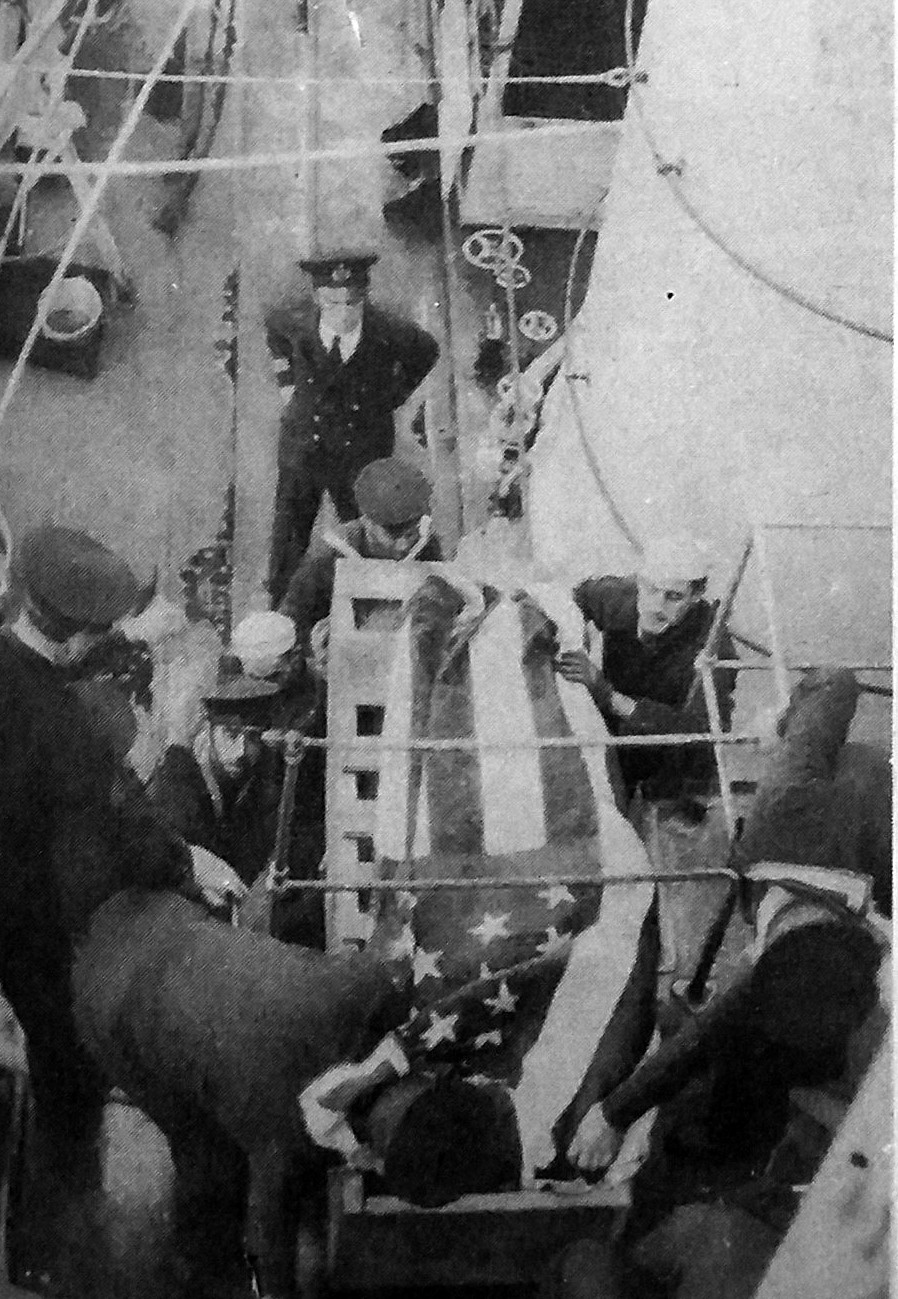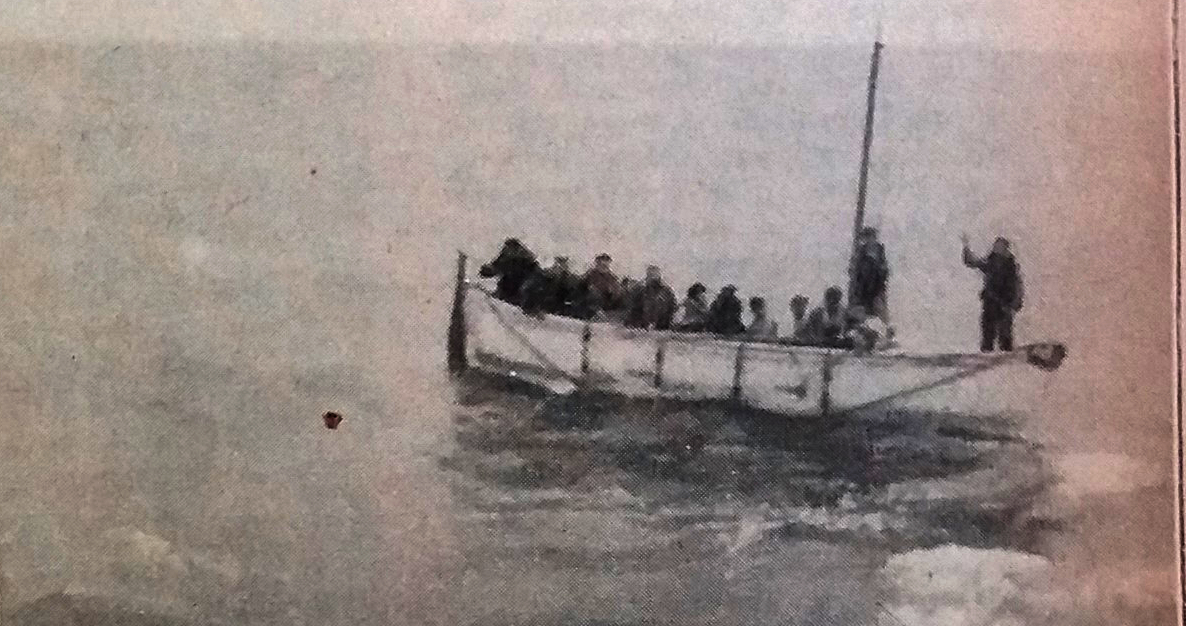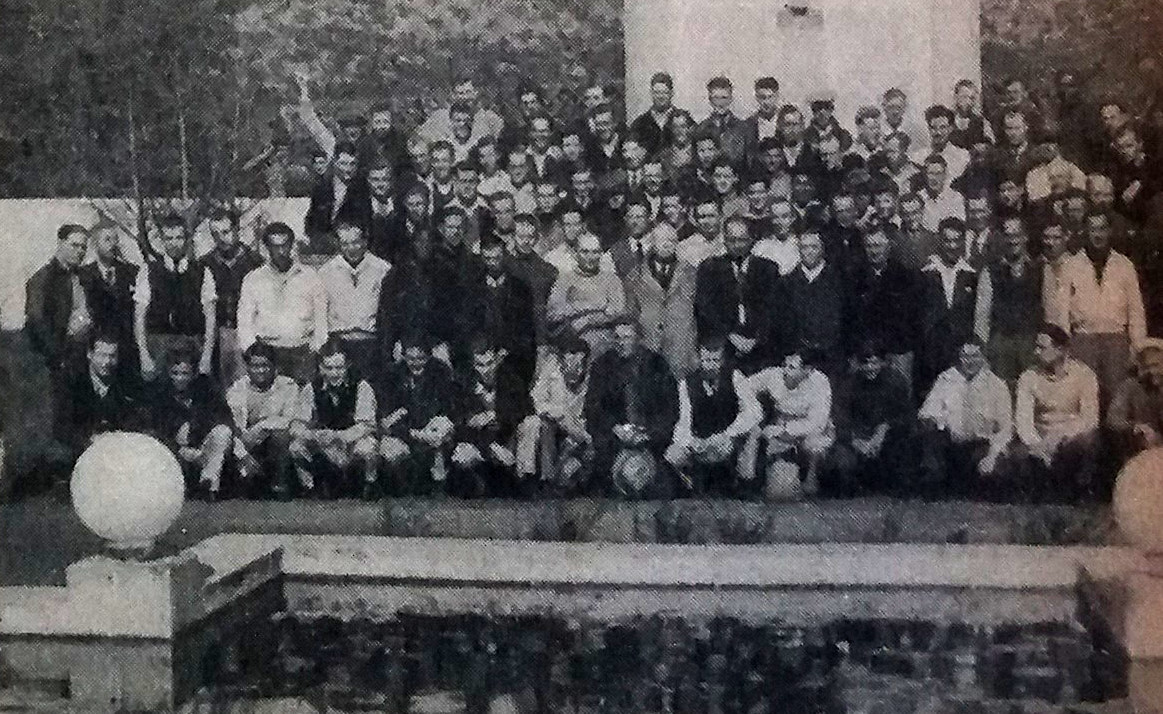
.
.
.
Funeral for the chief engineer of the Julia Ward Howe who died aboard the NRP Lima.
(picture: "Vida Mundial" magazine)
NRP Lima
(Portugal)
Capitain: Capitão-Tenente Sarmento Rodrigues
Type: Destroyer
Tonage: 1563 Gt
Owner: Portuguese Navy
Porto: Lisbon
Construção: Yarrow, England (1933)
The Portuguese destroyer NRP Lima was in Ponta Delgada, on January 26, 1943, when a distress call from the castaways of the American ship City of Flint, sunk by U-575 the day before, was heard.
The Portuguese ship had to travel about 300 miles to reach the place, but before arriving, around four in the morning of the 28th, white lights and very-lights were sighted. It turned out that there were two lifeboats each towing a raft, with a total of 71 people who belonged to the Julia Ward Howe, another American freighter, also sunk by a German submarine, the U-442.
After picking up the castaways, Lima continued the search and at 08.30 hours she spotted the first vessel with 16 castaways from the City of Flint. The searches continued following the instructions of those who had just been rescued and two more lifeguards were spotted, respectively at 10.14 and 11.35 am, each also with 16 men.
They also tried to locate a fourth lifeboat with the support of Naval Aviation, but on the 30th of January they received news of another sinking, 150 miles southwest of Faial and headed towards the area. They saw no one else.
The ten men on the last lifeboat were found by the HMS Quadrant 46 days after the attack when one man had already died on board.
With scarce fuel the Portuguese returned to Ponta Delgada, but they faced growing difficulties. With 119 castaways on board, the Lima faced a strong storm and a breakdown in the boilers almost sunk it. The ship was exposed to the sea, “for 45 minutes, crossed into the waves, it reached 67 degrees of inclination, rocking and falling asleep despite I had, as a precaution, filled the naphtha tanks with water”, clarifies the captains report.
Julia Ward Howe
(USA)
Captain: Andrew A. Hammond
Type: Steam merchant
Tonnage: 7,176 Gt
Owner: American-West African Line Inc
Homeport: Portland
Built: New England Shipbuilding Corp (1942)

One of the lifeboats and the shipwrecked already on land
(Photo: Vida Mundial Ilustrada Magazine)

When it entered the port, it was very damaged, including a lost lifeboat and another broken down; a twisted Turk; the entire port balustrade razed; the gangway on the same side carried by the sea; much of the furniture in the officers', sergeants' and infirmary's chambers broken; radio set smashed; a faulty radio goniometer; one of the naphtha tanks making water and several munitions sticks washed up at sea. One of the garrisons sailors broke a leg, and several castaways also suffered injuries.
Both the City of Flint and the Julia Ward Howe were part of the UG.4 convoy, leaving New York on January 13, 1943. Hit by a storm, the Julia Ward Howe was unable to keep up with the others and was traveling alone when, at 18.07 hours of January 27, it was hit by a torpedo fired by U-442. The crew abandoned ship in two lifeboats and the u-boat surfaced interrogating one of the officers. The Lima would pick them up the next morning, but the chief engineer would die on board because of injuries sustained during the attack.
Carlos Guerreiro
Sources:
National Archives UK, Kew (GB) § Arquivo Histórico da Marinha (PT) § Arquivo Histórico do MNE (PT) § uboat.net § Vida Mundial Ilustrada § Manuel Maria Sarmento Rodrigues (capitão-tenente), Contratorpedeiro Lima – Relatório do comandante de 15 a 31 de janeiro de 1943, Lisboa, Colecção Documentos – Edição Cultural da Marinha, 2005 § Diário de Notícias. §

